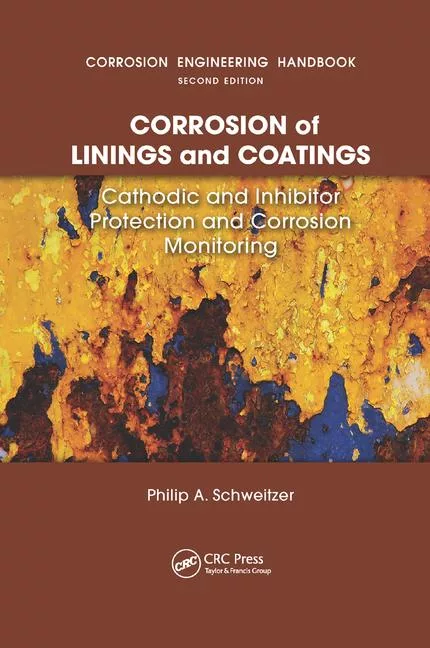Insurance Coverage for Y2K Losses and Liabilities
Individual companies could face losses and liabilities arising from: 1) third-party suits due to Y2K-induced property damage or bodily injuries resulting in damages to a third party; 2) losses due to physical injury to a company’s own property, either to computer information systems themselves or to manufacturing process systems that rely upon those computerized systems; 3) business interruption due to physical loss or damage to insured property; and 4) the failure of directors and officers to take appropriate action to address potential Y2K losses before they are incurred.
These potential risks are the subjects of traditional insurance policies, i.e., commercial general liability (CGL) insurance, property insurance, business interruption insurance, and directors and officers (D&O) insurance.
Are Y2K Losses Covered?
For purposes of the current discussion, this article will primarily be addressing property insurance. That property insurance provides coverage for Y2K losses can be seen by reference to certain property insurance policies and the existing case law. A typical all-risk policy provides the type of coverage needed under these circumstances. Following is an example of how a policy defines its coverage:This Policy insures against all risks of direct physical loss or damage to the insured property, except as hereinafter excluded.
None of the typical exclusions apply to Y2K losses. The first issue presented by this definition is whether or not damage to computer information systems, or damage to other processes or systems resulting from Y2K-defective computer information systems constitutes “physical loss or damage to the insured property.” This question was answered in Retail Systems, Inc. v. CNA Insurance Companies, 469 N.W.2d 735 (App. Minn. 1991). In this case, the issue was whether a computer tape and information contained on the tape were tangible property under a general liability policy. The CGL insurance provisions limit coverage to physical injury or destruction of tangible property. However, the issue of what is physical injury or destruction to tangible property under a CGL policy, and what is physical loss or damage to insured property under a property policy, are closely related. In this case, the court decided that the computer tape and data were tangible property within the meaning of the property damage provision of a data-processing consultant’s general liability policy covering physical injury for destruction of tangible property. The Court, in so finding, reasoned that the data on the tape were of permanent value and were integrated completely with the physical property of the tape. Quoting the Court, it stated, “[l]ike a motion picture, where the information and the celluloid medium are integrated, so too were the tape and data integrated at the moment the tape was lost. . . . [U]nlike data removable from a tape, the movie cannot exist without the film.” 469 N.W.2d at 737.
Another liability insurance case that has potential applicability to the issue of whether Y2K damages constitute physical loss or damage to insured property is Centennial Insurance Co. v. Applied Healthcare Systems, Inc., 710 F.2d 1288 (7th Cir. 1983), where a complaint that alleged that the insured’s defective computer controllers caused a loss of customerbilling and patient-care information that had been stored in the plaintiff’s computer system. This raised a specter that liability for property damage might ensue, requiring the insurer to defend its insured.
Are Preventative Actions Reimbursable?
Having determined that Y2K losses are covered under property insurance policies, companies that are currently or have recently taken action to prevent Y2K damage to their computer systems by replacing and upgrading computer software and hardware will want to know if those preventative actions are reimbursable under their property insurance policies. Indeed they are. Certain property insurance policies contain a “sue and labor” clause, which states:In the case of actual or imminent loss or damage by a peril insured against, it shall, without prejudice to this insurance, be lawful and necessary for the insured...to sue, labor and travel for, in and about the defense, the safeguard and the recovery of the property or any part of the property insured under such policies. [The insurer] shall contribute to the expenses so incurred according to the rate and quantity of the sum herein insured.
The sue and labor clause has a long and venerable history. Quoting from Reliance Insurance Co. v. Escapade, 280 F.2d 482 (5th Cir. 1960), n.11:
The clause is an ancient one. ‘It is not known when the words were first inserted in policies, but a clause of similar import appears in the ‘Tiger’ policy dated 1613. *** At the bottom is the assureds’ legal duty toward the underwriter to take action after an occurrence to prevent or minimize loss. ‘The existence of such a duty has been judicially recognized both in this country and in the United States *** and Arnould, writing in 1848, stated that it had long been settled that it was a clear duty of the assured to labour for the recovery and restitution of the detained or damaged property *** The clause is inserted ‘primarily for this purpose *** thus converting into an expressed obligation under the policy that which existed as a duty implied by law requiring that the assured use due diligence in taking measures for saving and preserving the damaged property.’ *** Compliance by the assured with this contractual duty is not optional. *** Against the background of this duty, the purpose of the clause is at least twofold. It ‘is to (a) encourage and (b) bind the assured to take steps to prevent a threatened loss for which the underwriter would be liable if it occurred, and when a loss does incur, to take steps to diminish the amount of the loss.’ ***
Thus, the insured is required, under the sue and labor clause, to use due diligence to take measures for saving and preserving property to prevent a threatened loss to property for which the insurer would be liable if such a loss would occur. In the current context, the sue and labor clause would cover the policyholder’s fees and costs to identify, remediate, test and retest computer systems in order to prevent Y2K losses from taking place, including the purchase of new hardware and software. Under this theory, GTE Corp. has sued its insurers for coverage in the United States District Court for the District of New Jersey, an action filed in June 1999.
Companies who have taken these types of steps in the recent past may be wondering whether reimbursement may be barred under the policy provisions requiring that notice of loss to the insured be given “as soon as practicable, in no event, no later than thirty (30) days after you become aware of such loss or damage,” as well as requirements that proof of loss be filed within a set period of time, usually anywhere from sixty (60) days to one (1) year, and suit limitation periods requiring that suit be brought to enforce any claim for loss brought within a set period, usually one to two years after the loss. Of course, under the sue and labor clause, monies that are expended to prevent the occurrence of Y2K-related problems are spent to prevent “actual or imminent loss or damage.” Thus, the loss itself has not occurred, and there is no requirement that notice or proof be given, since the loss has not taken place.
Policies on Information Systems
As an adjunct to property insurance coverage, some companies have obtained information-systems policies. These policies also cover risks of direct physical loss to covered property, except where excluded. Covered property includes:(a) Electronic and component parts, including data-processing systems owned by [the insured] and similar property of others in [the insured’s] care, custody and control for which [the insured is] responsible; and
(b) Electronic media, including converted data owned by [the insured] and similar property of others in [the insured’s] care, custody and control for which [the insured is] responsible. Electronic media means all forms of data, including computer instructions and programs that are converted to a form usable in [the insured’s] computer operations. This also includes the materials on which the data is recorded.
In other words, information-systems policies cover risk of direct physical loss to software and hardware. Under such policies, it is certainly not a stretch to find that software and hardware that become nonfunctional due to their inability to recognize four-digit numbers for the calendar year would be a covered loss. Similarly, actions taken under the sue and labor clause to prevent losses to computer software and hardware should be reimbursed by the insurer.
Y2K Exclusion
Since 1998, the carriers have inserted into CGL and property policies, among others, Form IL09-35, an exclusion1 that “modifies” coverage provided thereunder for “certain computer-related losses.” The Insurance Services Office (ISO) was reported to have stated in 1998 regarding IL09-35 that “the use of endorsement IL09-35 has no impact on coverage because, explained above in the filing document, the present policy does not cover the kind of loss presented by the Y2K situation.” However, the endorsement, itself, does purport to impact coverage, because it is captioned, “This Endorsement Changes the Policy. Please Read it Carefully.” In an appeal by General Electric and the Hospital Association of New Jersey from the ruling of the New Jersey Department of Banking and Insurance allowing the usage of IL09-35, their attorneys stated that:In its submission to the New Jersey Insurance Department, ISO contended [as it did with the Sudden and Accident Pollution Exclusion] that the existing policies did “not cover the kind of loss presented by the Y2K situation” and thus, that the proposed exclusion was merely a clarification of existing coverage. For this reason ISO asserted there was “no rating impact with the attachment of this endorsement.”
The question arises that if the endorsement is merely a clarification as the ISO statement contended, then why does the endorsement, itself, state that it “changes the policy” and modifies insurance coverage provided? Insurers relying upon IL09-35 or other tenuous defenses would be well advised to consider that, insofar as CGL coverage pertains, the insurer must either defend under reservation of rights or immediately file a declaratory judgment action requesting a declaration of rights under the pertinent policies or be stopped even from raising such defenses. Employers Insurance of Wausau v. Ehlco Liquidating Trust, 186 Ill. 2d 127, 708 N.E.2d 1122 (1999).
In conclusion, any company that has taken steps to remediate its information systems for Y2K problems may have a claim against its property insurer for reimbursement for costs the company has incurred or will thereby incur. Consultation with coverage counsel in this regard would be necessary to confirm the existence of a valid claim.
Looking for a reprint of this article?
From high-res PDFs to custom plaques, order your copy today!





